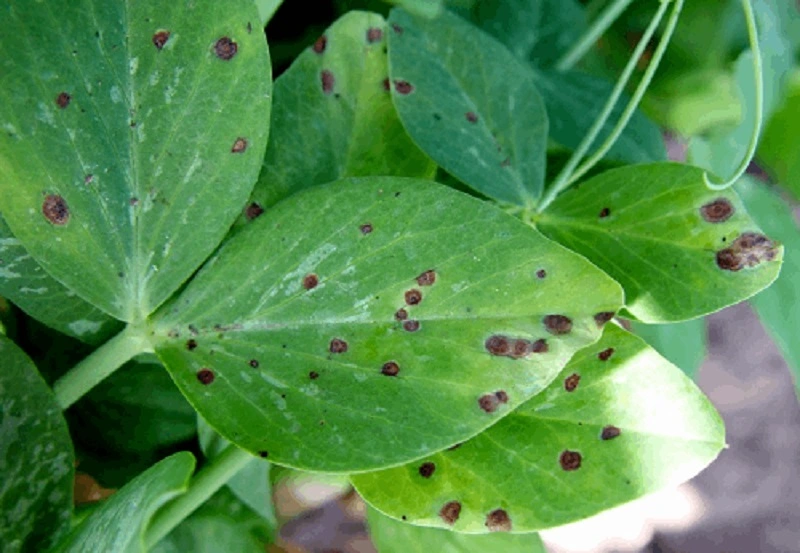Ascochitosis is a fungal disease. What are its symptoms and how to deal with it?
Ascochitosis is a fungal disease that most often affects legumes (peas, lentils, beans, rye, barley, soybeans), as well as vegetables (tomatoes, cucumbers, beets) and berry crops (strawberries).
On legumes ascochitosis manifests itself in the form of dark brown spots, slightly convex and different in size on the leaves and small elongated wounds on the stems. The seeds (mostly beans) of the affected plants have dark brown spots, and with severe damage the spots merge and cover the entire surface of the bean.
Among cereals, winter varieties are most often subject to infection. At first, small light brown spots appear on the stems. Gradually the guilt spreads, the leaves change color to gray and dry up. The ears are also affected, a black embryo appears.
Causes of ascochitosis:
- infected seeds
- remains of affected plants at the place of sowing
- affected soil
- spread by wind, insects and precipitation
Means of treatment and protection against ascochitosis:
A fungicide is used to treat the affected plants.
The following measures should be observed for prevention:
- observance of crop rotation with 3 – 4 year alternation of crops
- destruction of the remains of previous crops
- seed treatment
- timely harvesting
- early sowing
- use of healthy seed

